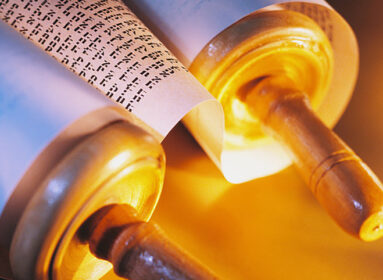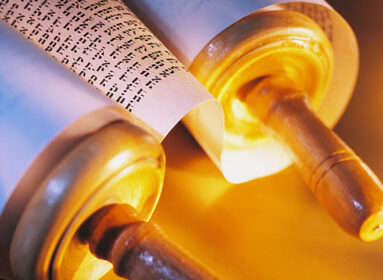By Shlomo Riskin
“[Nahamu] Comfort you, comfort you, my people, says your God” (Isaiah 40:1-26)
This Shabbat, Va’etchanan – following the fast of the Ninth of Av, our memorial for the destruction of both Holy Temples (586 BCE and 70 CE) – is called Shabbat Nahamu, from the opening words of the haftora prophetic portion cited above.
But when one tries to imagine the enormity of the tragedy – the loss of the central shrine of our nation, the abject defeat of Jewish national sovereignty in Israel, the cold-blooded murder of millions of Jews, the disappearance of an entire religious way of life that was built upon a complex and inspiring sacrificial system, and the beginning of an exile to all four corners of the world, filled with persecutions and pogroms that would culminate in the horrors of the Holocaust – one cries out in hopeless anguish, “What idea can possibly evoke comfort? What human action can possibly begin to bring balm to soothe the broken hearts of a dismantled and demoralized people?”
To look for a response, let us turn to the very last Mishna in the Babylonian Tractate Ta’anit (fast days): “Rabban Shimon ben Gamliel said, ‘There were no greater holidays for Israel than the 15th day of the month of Av and Yom Kippur [the Day of Atonement], when the young women of Jerusalem would go out bedecked in borrowed white dresses [so as not to embarrass those who could not afford a nice dress] and would dance in the vineyards.’
And what would they say? ‘Young man, lift up your eyes and decide which maiden you shall choose for yourself. Do not set your eyes [only] on beauty, but set your eyes on a [woman from] a good Jewish family.’ As it says in the Scriptures, ‘grace is false and beauty’s vain, only a woman who fears the Lord deserves to be praised’ [Proverbs 31], and it says, ‘Give her the fruit of her hands and let her deeds praise her in the gates’ [ibid.], and as it also says, ‘Go out and look, daughters of Zion, upon King Solomon and upon the crown with which his mother crowned him, on the day of his wedding and on the day of the rejoicing of his heart’ [Song of Songs 3]; on the day of his wedding refers to the day of the giving of the Torah, and on the day of the rejoicing of his heart refers to the building of the Holy Temple, may it be rebuilt speedily and in our time’” (ibid. 26b).
What a strange manner of celebration – a Jewish Sadie Hawkins Day? What special event occurred on 15 Av to have engendered such an uncharacteristic form of rejoicing? It is interesting to note that Amoraic discussion on the Mishna suggests no fewer than six events that occurred on Tu B’Av (15 Av), from “permission to the tribes to intermarry with each other,” to “the day when the Israelites ceased dying in the desert” (ibid. 30b). It goes without saying that if the Talmud gave six “historical” possibilities for this unique day, the true reason has been forgotten; no one of the mentioned six was apparently found to be truly compelling.
Hence, I wish to suggest another possibility, along the lines of a present-day midrash, that would explain our celebration of the day, as well as the source of our comfort after the destruction according to the talmudic sages.
The Ninth of Av brought in its wake the destruction of the Temples, a tremendous loss of lives including Kohen-Priests, Levites and defenders of Jewish independence, along with the end of the Jewish dream of world redemption. I would imagine that the survivors of the tragedy, especially those who lived in Jerusalem, immediately tore their outer garments and sat on the floor, began the shiva (seven-day) mourning period for the loss of a close relative (which indeed had probably occurred for many, if not most of them). If so, the seventh day – the day when their mourning was supposed to have ended and they were to resume mingling with society – came out on 15 Av (our Sages rule that partial mourning, even for a short period, on the seventh day, is considered a full seventh day of mourning).
On that day, as they dazedly rose from their shiva, our Sages ordered a Sadie Hawkins Day. “Get married,” they commanded, “have children; remember that we still are God’s chosen children, that we will yet rebuild the Temple and bring about redemption in accordance with God’s promised covenant.”
This not only explains the celebration of Tu B’Av, it explains why every Jewish wedding is a profound statement of faith in the Jewish future. Most importantly, it illuminates the talmudic teaching that “whoever causes a bride and groom to rejoice is restoring one of the ruins of the city of Jerusalem.”
Rabbi Shlomo Riskin is chancellor of Ohr Torah Stone and chief rabbi of Efrat, Israel.







 Southern New England Jewish Ledger
Southern New England Jewish Ledger













